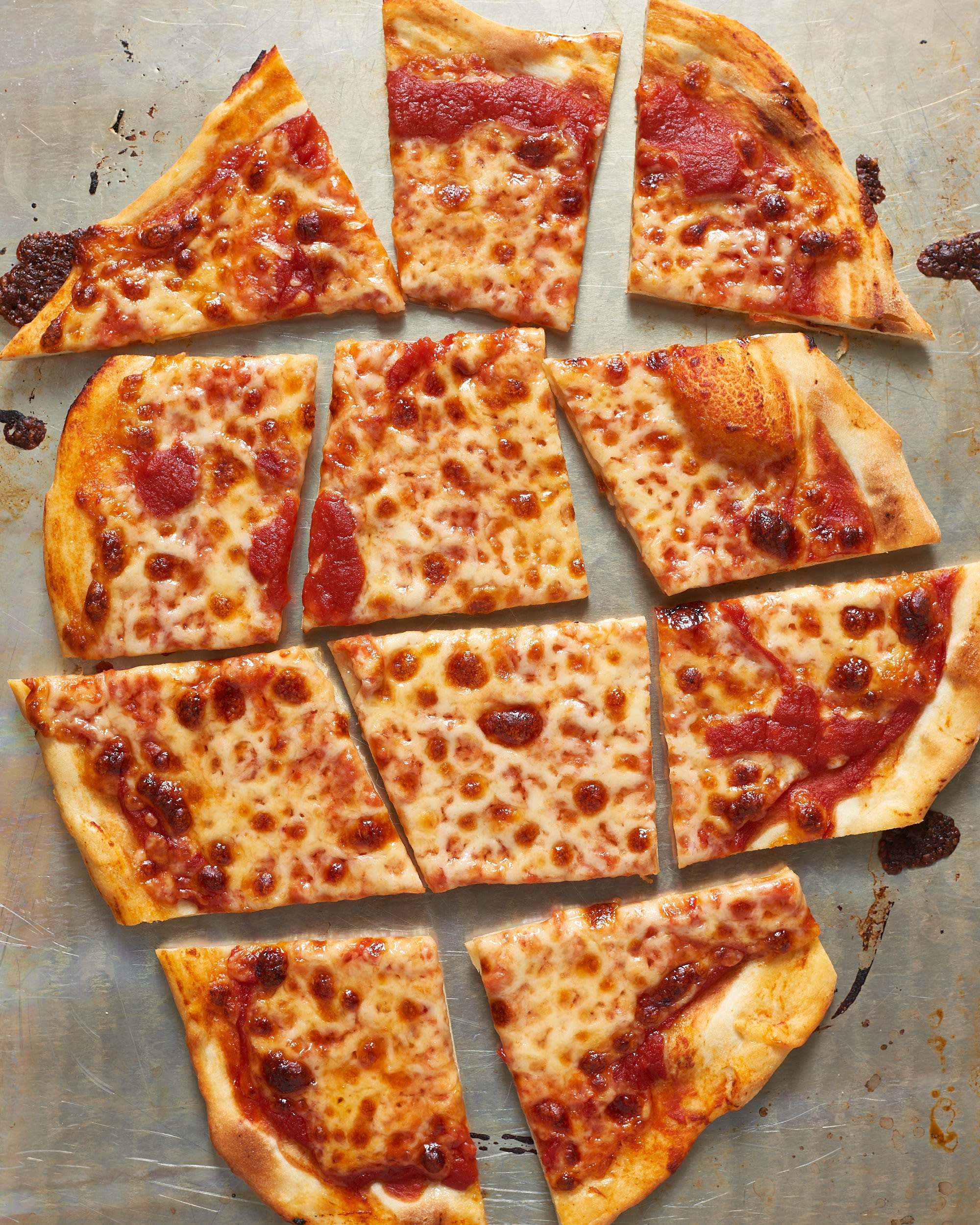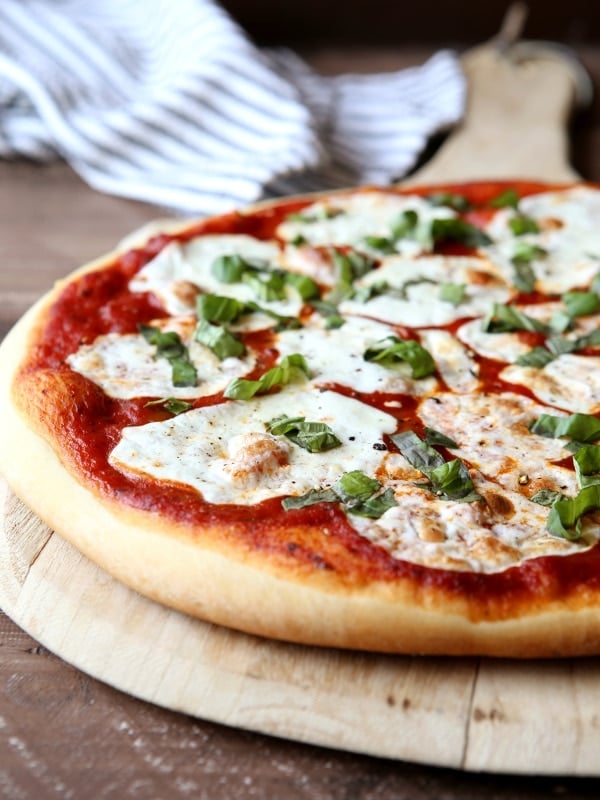The Art of the Homemade Pizza: From Dough to Delight
:max_bytes(150000):strip_icc()/Simply-Recipes-Homemade-Pizza-LEAD-4-7d8b34fc12c940a5975216d4b6420ed4.jpg)
The aroma of baking pizza, that irresistible blend of yeasty dough, simmering sauce, and melting cheese, is a siren song few can resist. While the convenience of takeout is undeniable, nothing truly compares to the satisfaction of crafting a homemade pizza, tailored precisely to your taste and preferences. This journey into the heart of homemade pizza will guide you through every step, from kneading the dough to the final, glorious slice. We’ll explore different dough techniques, sauce variations, topping combinations, and baking methods, empowering you to become a pizzaiolo in your own kitchen.
I. The Foundation: Crafting the Perfect Dough
The foundation of any great pizza is its dough. A well-made dough provides the perfect canvas for your toppings, offering a pleasing chewiness and a subtle flavor that complements, not overpowers, the other ingredients. While you can certainly purchase pre-made dough, making your own is a rewarding experience that allows for greater control over texture and flavor.
Several methods exist for making pizza dough, each with its own nuances:
-
The Classic Neapolitan Dough: This dough utilizes a high hydration (around 60-70%) resulting in a soft, airy crust with a slightly charred exterior. It requires a longer fermentation period, often 18-24 hours, allowing for the development of complex flavors. This method demands patience but rewards the baker with a truly authentic Neapolitan experience.
-
The New York Style Dough: This dough boasts a slightly lower hydration (around 55-60%), resulting in a thinner, crispier crust with a slightly chewy interior. The fermentation time is typically shorter, 4-6 hours, making it a more accessible option for busy weeknights.

-
The Deep Dish Dough: Designed for Chicago-style deep-dish pizzas, this dough is thicker and richer, often incorporating additional fat like olive oil or butter. It requires a sturdy pan and a longer baking time to ensure the crust is fully cooked.

Ingredients for a Basic Pizza Dough (New York Style):
- 1 cup (240ml) warm water (105-115°F)
- 1 teaspoon sugar
- 2 teaspoons active dry yeast
- 2 1/2 cups (300g) all-purpose flour, plus more for dusting
- 1 teaspoon salt
- 2 tablespoons olive oil

Instructions:
- Activate the yeast: In a large bowl, combine warm water, sugar, and yeast. Let stand for 5-10 minutes until foamy.
- Combine ingredients: Add flour and salt to the yeast mixture. Stir with a wooden spoon until a shaggy dough forms.
- Knead the dough: Turn the dough out onto a lightly floured surface and knead for 8-10 minutes, until smooth and elastic. Add a little more flour if the dough is too sticky.
- First rise: Place the dough in a lightly oiled bowl, turning to coat. Cover with plastic wrap and let rise in a warm place for 1-1.5 hours, or until doubled in size.
- Shape and second rise: Punch down the dough and divide it into your desired number of pizzas. Shape each portion into a ball. Let rest for another 30 minutes before stretching or rolling.
II. The Sauce: A Symphony of Flavors
The sauce is the heart of your pizza, providing a flavorful foundation for your toppings. A simple marinara is a classic choice, but feel free to experiment with different herbs, spices, and even roasted vegetables to create your signature sauce.
Simple Marinara Sauce:
- 28 ounces canned crushed tomatoes
- 2 cloves garlic, minced
- 1 teaspoon dried oregano
- 1/2 teaspoon dried basil
- Salt and pepper to taste
- 1 tablespoon olive oil
Instructions:
- Heat olive oil in a saucepan over medium heat. Add minced garlic and sauté for 1 minute until fragrant.
- Add crushed tomatoes, oregano, basil, salt, and pepper. Bring to a simmer and cook for at least 15 minutes, stirring occasionally, allowing the flavors to meld. For a smoother sauce, blend with an immersion blender.
Variations:
- Spicy Marinara: Add a pinch of red pepper flakes or a dash of your favorite hot sauce.
- Garlic Parmesan Sauce: Incorporate grated Parmesan cheese and extra garlic.
- Pesto Pizza: Use pesto instead of marinara for a fresh, herbaceous twist.
- Roasted Red Pepper Sauce: Roast red peppers until blistered, then blend with olive oil, garlic, and herbs for a sweet and smoky sauce.
III. The Toppings: A Culinary Canvas
The toppings are where your creativity truly shines. From classic combinations like pepperoni and mushrooms to more adventurous choices like roasted vegetables and gourmet cheeses, the possibilities are endless. Remember to consider the balance of flavors and textures when selecting your toppings. Avoid overloading the pizza, as this can lead to a soggy crust.
Classic Topping Combinations:
- Margherita: Fresh mozzarella, basil, and a drizzle of olive oil.
- Pepperoni: Pepperoni slices, mozzarella cheese.
- Meat Lovers: Pepperoni, sausage, bacon, ham, mozzarella cheese.
- Vegetarian: Mushrooms, onions, peppers, olives, spinach, mozzarella cheese.
IV. Baking to Perfection:
The baking process is crucial for achieving a perfectly cooked pizza. Different ovens and methods will yield different results.
-
Oven Baking: Preheat your oven to its highest temperature (ideally 500°F or higher). Place a pizza stone or baking steel in the oven while it preheats for optimal heat retention. This will create a crispy crust.
-
Pizza Stone: A pizza stone absorbs and radiates heat evenly, resulting in a crispier crust.
-
Baking Steel: Even better than a pizza stone, a baking steel retains heat even more effectively, leading to an exceptionally crisp crust.
-
Grill Baking: Grilling your pizza imparts a smoky flavor and creates a slightly charred crust. Use a pizza peel to transfer the pizza to and from the grill.
-
Cast Iron Skillet: A cast iron skillet provides excellent heat distribution and can produce a wonderfully crispy crust.
V. Serving and Enjoying Your Creation:
Once your pizza is baked to perfection, let it cool slightly before slicing and serving. Garnish with fresh herbs or a drizzle of olive oil, if desired. Enjoy the fruits of your labor with family and friends, savoring the taste of your handcrafted masterpiece.
Conclusion:
Making homemade pizza is a rewarding culinary adventure that allows you to express your creativity and personalize your pizza experience. From the careful kneading of the dough to the strategic placement of your favorite toppings, every step contributes to the final result: a delicious, satisfying pizza that surpasses anything you could order from a restaurant. So gather your ingredients, embrace the process, and embark on your journey to pizza perfection. The aroma alone is worth the effort! Remember to experiment, have fun, and enjoy the delicious results of your homemade pizza creation. The possibilities are truly endless!

Video tentang The Art of the Homemade Pizza: From Dough to Delight
Penutup
Therefore, we hope this article has provided valuable insights on The Art of the Homemade Pizza: From Dough to Delight. We hope you found this article informative and helpful. See you in our next article!

:max_bytes(150000):strip_icc()/Simply-Recipes-Homemade-Pizza-LEAD-4-7d8b34fc12c940a5975216d4b6420ed4.jpg?w=1920&resize=1920,0&ssl=1)